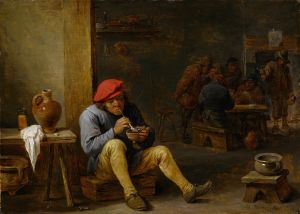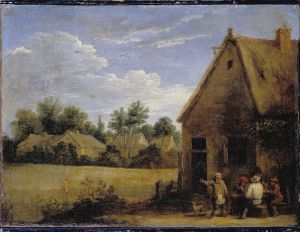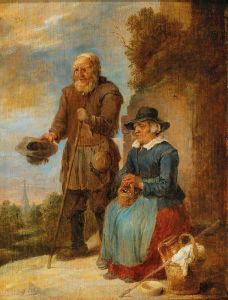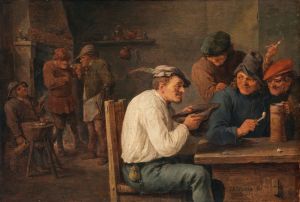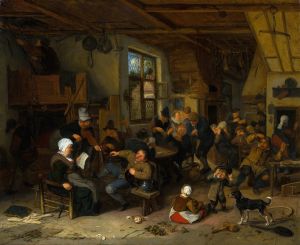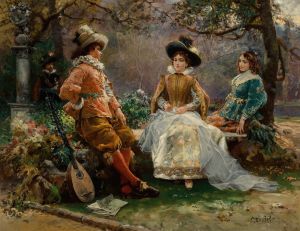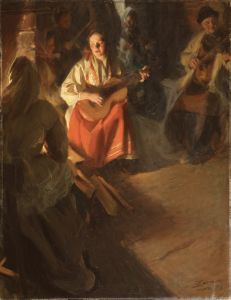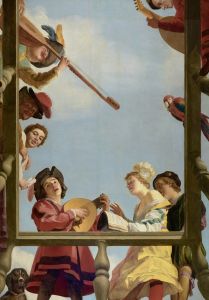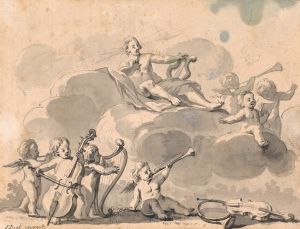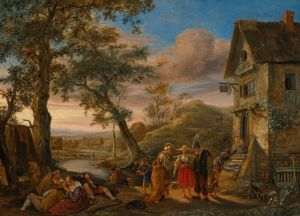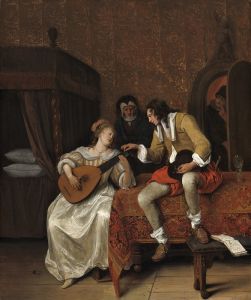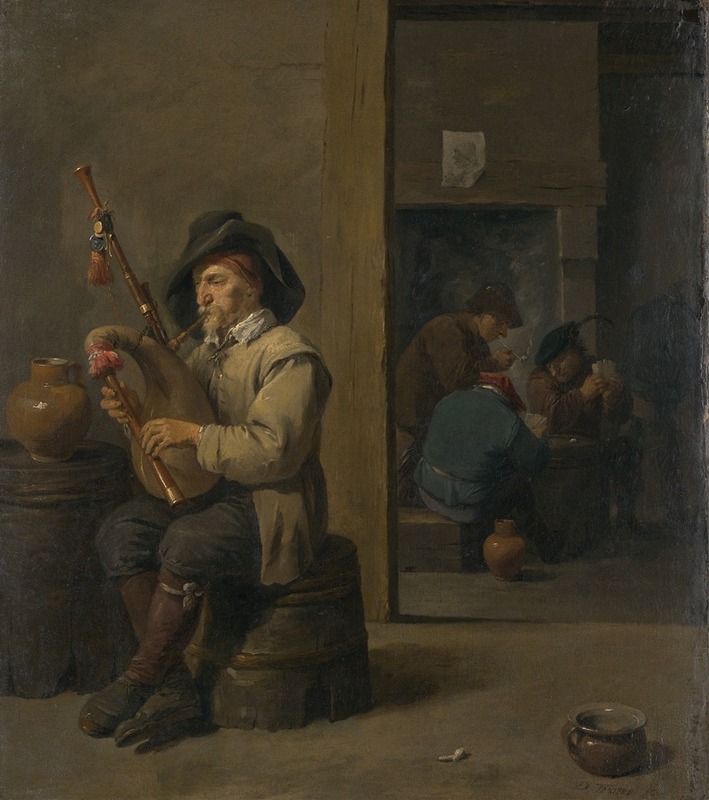
Bagpiper in an Inn
A hand-painted replica of David Teniers The Younger’s masterpiece Bagpiper in an Inn, meticulously crafted by professional artists to capture the true essence of the original. Each piece is created with museum-quality canvas and rare mineral pigments, carefully painted by experienced artists with delicate brushstrokes and rich, layered colors to perfectly recreate the texture of the original artwork. Unlike machine-printed reproductions, this hand-painted version brings the painting to life, infused with the artist’s emotions and skill in every stroke. Whether for personal collection or home decoration, it instantly elevates the artistic atmosphere of any space.
David Teniers the Younger was a prominent Flemish artist known for his genre scenes, landscapes, and depictions of peasant life. Born in Antwerp in 1610, Teniers was part of a family of painters, with his father, David Teniers the Elder, also being a notable artist. Teniers the Younger became a master in the Antwerp Guild of Saint Luke in 1632 and went on to have a successful career, eventually becoming the court painter for Archduke Leopold Wilhelm of Austria.
"Bagpiper in an Inn" is one of Teniers the Younger's many works that capture scenes of everyday life, particularly focusing on the activities and social interactions of the lower classes. This painting is characteristic of Teniers' style, which often includes detailed and lively depictions of rustic interiors and tavern scenes. His works are celebrated for their vibrant portrayal of peasant life, filled with humor and a keen observation of human behavior.
In "Bagpiper in an Inn," Teniers presents a scene set in a cozy, dimly lit tavern. The central figure is a bagpiper, a common subject in Teniers' oeuvre, who is depicted playing his instrument, likely providing entertainment for the patrons of the inn. The bagpiper is surrounded by a group of people, each engaged in various activities such as drinking, talking, or listening to the music. Teniers' attention to detail is evident in the expressions and postures of the figures, as well as in the careful rendering of the tavern's interior, which includes rustic furniture and a warm, inviting atmosphere.
Teniers' use of color and light in this painting is notable, as he employs a palette of earthy tones to create a sense of warmth and intimacy. The lighting is skillfully handled to highlight the central figure and create depth within the composition. This technique helps to draw the viewer's attention to the interactions between the characters and the lively atmosphere of the scene.
The painting reflects Teniers' interest in the theme of music and its role in social gatherings. Bagpipers were a popular subject in Flemish art of the time, symbolizing the joy and communal spirit of peasant festivities. Teniers' depiction of the bagpiper and the surrounding figures captures the essence of these gatherings, emphasizing the simple pleasures of music and companionship.
"Bagpiper in an Inn" is an excellent example of Teniers' ability to combine genre painting with a sense of narrative and character. His works often contain subtle moral or humorous undertones, inviting viewers to reflect on the scenes depicted. Teniers' paintings were highly sought after during his lifetime and continue to be appreciated for their charm, technical skill, and insight into 17th-century Flemish culture.
Today, David Teniers the Younger's works, including "Bagpiper in an Inn," can be found in major museums and private collections around the world. His paintings offer a window into the past, providing a vivid portrayal of the everyday lives and social customs of his time.






